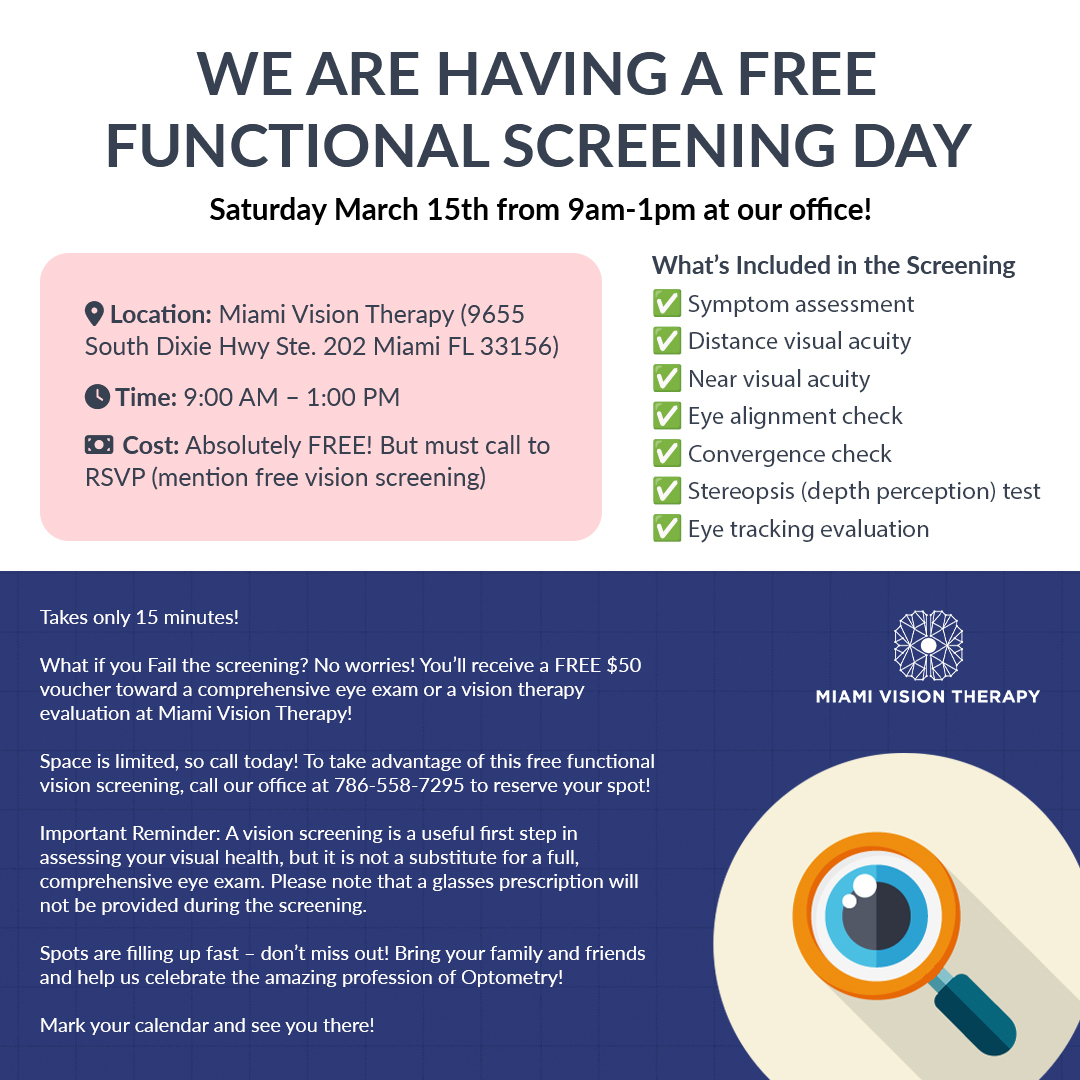


May 8, 2025
This is a question we hear often—and it’s an important one. But before we dive into the “why,” let’s first define what binocular vision dysfunction (BVD) actually is.
What Is Binocular Vision Dysfunction?
Binocular vision dysfunction occurs when the eyes struggle to maintain proper alignment or coordination during visual tasks. This makes it difficult to achieve efficient, stable fusion of the images from both eyes. While strabismus (an eye turn) is one form of BVD, most people with BVD do not have an obvious eye turn. In fact, the most common type is convergence insufficiency, affecting 5–13% of school-aged children. This condition causes difficulty turning the eyes inward to focus on near tasks like reading.
Other common types of BVD include:
Convergence excess
Accommodative insufficiency
Accommodative excess
Divergence insufficiency
Divergence excess
Research estimates that 10–25% of the general population has some form of binocular vision dysfunction.
BVD can be categorized into developmental or acquired origins.
This form emerges during a child’s growth and visual system maturation. It can result from various influences, including environmental stressors, genetic predisposition, or atypical neurodevelopment. Below are suspected contributors:
A. Delayed or Atypical Visual Maturation
Premature birth (especially before 32 weeks) often leads to delayed tracking, reduced fixation, and risk for cortical visual impairment.
Perinatal hypoxic-ischemic events like umbilical cord compression can impair the brain’s visual pathways.
Extended NICU stays may limit exposure to normal visual stimuli, delaying visual-motor development.
Neurological conditions such as cerebral palsy, Down syndrome, or other genetic disorders often delay visual and oculomotor development.
Prenatal exposure to alcohol, drugs, or infections (e.g., TORCH infections) may disrupt visual development.
B. Birth and Delivery Factors
Cesarean deliveries may bypass critical sensory and neural stimulation that occurs in vaginal birth, potentially impacting vestibular and proprioceptive development—both of which are key for visual-motor integration.
Forceps or vacuum deliveries may cause cranial nerve trauma, which can impair eye movements.
C. Visual Environment
Excessive near work without breaks (e.g., screen time, reading) puts excess strain on the visual system. Our ciliary muscles, which help adjust focus, can fatigue just like any other muscle when overused. Additionally, our six extraocular muscles per eye can also become strained, leading to coordination breakdown.
Modern lifestyle changes—especially post-pandemic—increase reliance on near vision more than our biology evolved to handle.
D. Retained Primitive Reflexes
These reflexes—like the ATNR or STNR—are present at birth to protect the infant but should integrate by 6–12 months. If they persist, they can interfere with voluntary visual control. At Miami Vision Therapy, we routinely screen for retained primitive reflexes as part of our functional evaluation.
E. Sensory Processing Challenges
Children with sensory processing difficulties may show:
Hypersensitivity to light or motion
Poor balance and spatial awareness
Difficulty integrating visual and auditory input
Poor postural control or bilateral coordination
These challenges often correlate with BVD and may require a multidisciplinary approach.
F. Family History
Strabismus is significantly more likely among first-degree relatives—up to 5–10x the risk. Studies also show that monozygotic (identical) twins have a higher rate than dizygotic (fraternal) twins, suggesting a genetic component. Conditions like anisometropia and high hyperopia (especially in children) also tend to run in families. While non-strabismic BVDs aren’t always considered hereditary, in clinical practice we often see siblings with similar vision profiles.
G. Chronic Otitis Media (Ear Infections)
Middle ear infections can affect the vestibular system, which plays a crucial role in posture, spatial orientation, and gaze stability. Disruption to this system can impact eye teaming, tracking, and focusing abilities—especially during movement.
This form typically arises after a specific event such as:
Traumatic brain injury (e.g., concussion, whiplash)
Neurological disease
Decompensated strabismus
Since over 80% of the brain is involved in visual processing, it’s not surprising that up to 90% of patients report visual symptoms following a concussion or head injury. These may include double vision, difficulty reading, eye strain, or headaches.
If you or your child has experienced any of the above factors—and you're noticing signs like poor reading stamina, frequent eye strain, or visual avoidance—it could be more than just “bad habits” or lack of focus.
At Miami Vision Therapy, we specialize in identifying and treating binocular vision dysfunction using evidence-based approaches tailored to each patient.
📞 Call us today at (786) 558-7295 to schedule a Functional Vision Evaluation and start the path toward clearer, more comfortable vision.